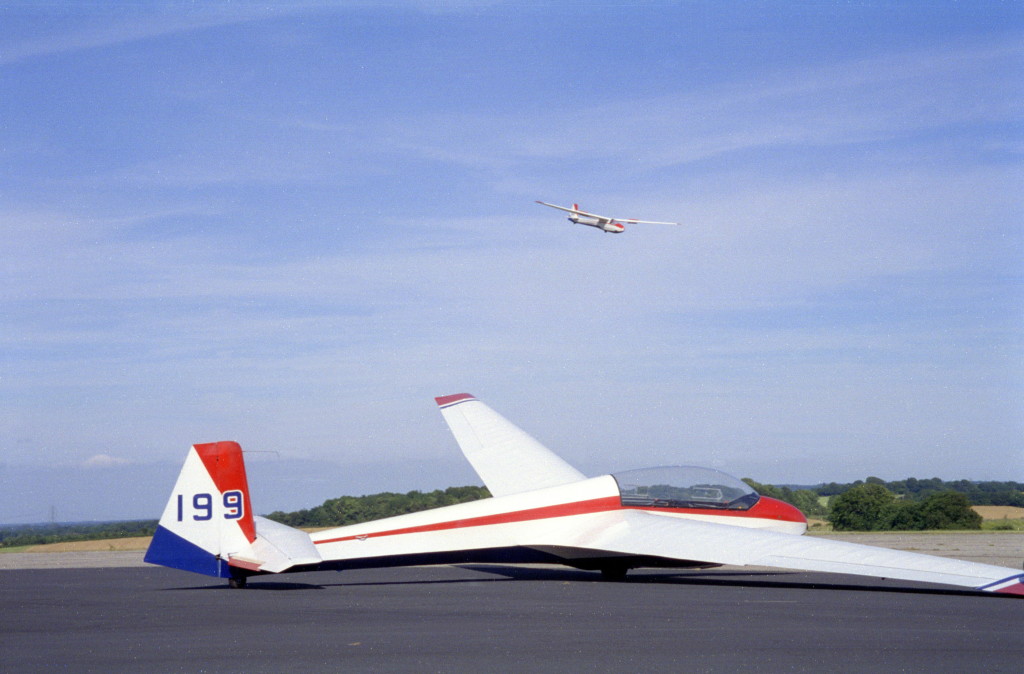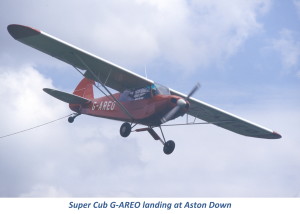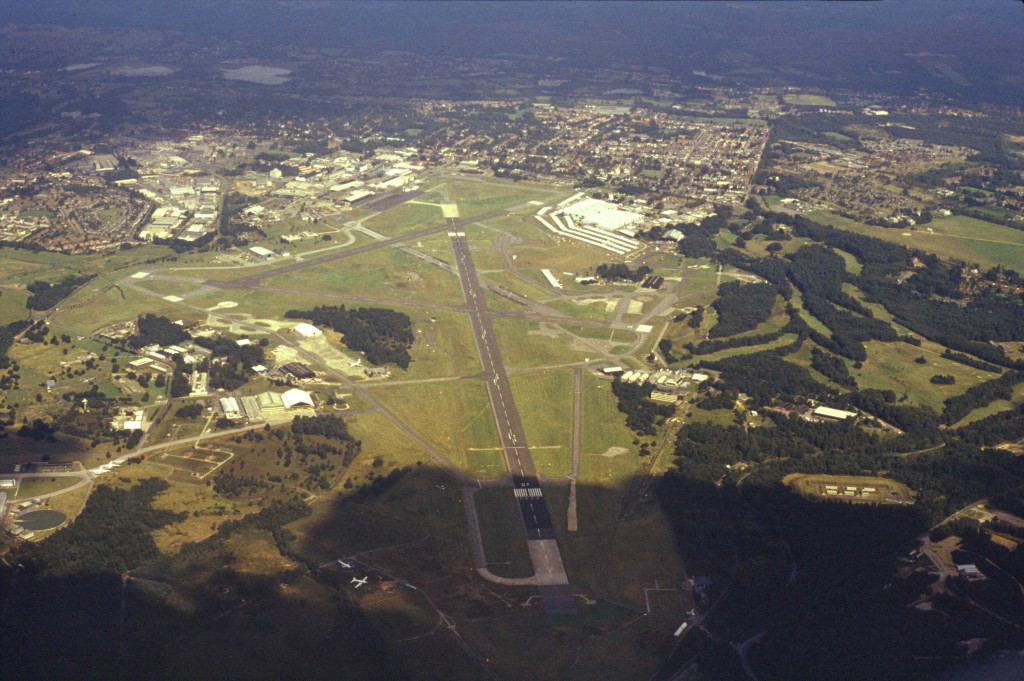The Club traces its origins back to the Royal Aircraft Establishment Gliding Club which flew from Farnborough aerodrome. Its badge depicts a glider flying over Cody’s tree. Samuel Cody made the first powered flight in Britain, at the site of Farnborough aerodrome, and he measured the thrust of his engine and propeller by tying his aeroplane to a tree. A replica of this tree was made and is still preserved at Farnborough.
Its badge depicts a glider flying over Cody’s tree. Samuel Cody made the first powered flight in Britain, at the site of Farnborough aerodrome, and he measured the thrust of his engine and propeller by tying his aeroplane to a tree. A replica of this tree was made and is still preserved at Farnborough.
But the RAE Gliding Club was not the first to fly gliders at Farnborough. Shortly after the Second World War the RAE Technical College established a ‘Gliding Flight’ using gliders acquired by the RAE from Germany together with two British gliders.
(See http://rae-exapprentices.org/01aug03GlidingFlight.pdf.)
The Empire Test Pilots School also operated gliders at Farnborough; Bill Bedford was a prominent test pilot there who also flew gliders (and held British goal, distance and altitude gliding records).
The Royal Aircraft Establishment Aero Club was formed in 1922 and first flew in 1923 (they had to design and build their aeroplane first!). A gliding section was formed in 1959 and was split off in 1965. This splinter group was the RAE Gliding Club, flying from Farnborough at weekends and bank holidays (and Friday evenings in summer). The method of launching was by car tow. There were four different runways available (each with two directions) but the main runway 25/07 was much the longest at about 8000 feet. For many years the Club had a fleet of 2 two-seaters and 3 single-seaters.
From very early on the Club had the tradition of not charging by-the-minute soaring fees, just as now. In fact, car tows were also included in the annual membership fee and so having paid for the year’s membership members could fly as much as they wanted without further charge.
Although the Club considered itself very fortunate in having available the facilities of a large airfield and a hangar, there were two important drawbacks.
First, security considerations meant that membership was restricted to Government employees (such as civil servants and members of the armed services) living within 12 miles of the airfield. Security considerations also explain why there are very few photographs of the Club at Farnborough. Most photos available were taken when on detachment or during expeditions to other sites, often after a field-landing!
Secondly, in alternate years the airfield was the site of the Farnborough airshow. This took place in early September but preparations started in early summer and by July enough obstructions had been placed on the airfield that it was not feasible to glide. So from July until the end of September the Club had to go somewhere else to operate.
Aerial view of Farnborough aerodrome during the airshow preparation period in August 1992. The exhibition area on the south side of the far end of the main runway, and the orange boards marking the flight display line on the north side of the runway are both evident.
We were very grateful that the clubs at Weston-on-the-Green, Rivar Hill, Thruxton and especially Odiham welcomed us during these periods.

Ka8 831 landing past K13 199 at RAF Odiham during the Farnborough airshow period in 1994
This was also a period of frequent expeditions, both by small groups of members taking one or two Club and privately owned gliders and also by the majority of the Club taking most of the Club fleet. For a period the Club took a K13 and often a single seater to compete in Competition Enterprise, giving inexperienced pilots the opportunity to take part with a senior pilot in cross-country flying from other sites such as North Hill and Shobdon. North Hill subsequently became a favourite location for expeditions, along with Aston Down, Keevil, Bidford, Talgarth and indeed Lasham.
 In 1991 the Royal Aerospace Establishment (as it had become) was merged with other defence research establishments to form the Defence Research Agency and the name of the gliding club was changed to reflect this, becoming the DRA Gliding Club. Around this time business jet flying started to expand at Farnborough and the Club subsequently had to give up car launching and use aerotowing exclusively, having bought a Piper PA-18 Super Cub (G-AREO). This was purchased in Scotland but in fact was previously a Lasham tug.
In 1991 the Royal Aerospace Establishment (as it had become) was merged with other defence research establishments to form the Defence Research Agency and the name of the gliding club was changed to reflect this, becoming the DRA Gliding Club. Around this time business jet flying started to expand at Farnborough and the Club subsequently had to give up car launching and use aerotowing exclusively, having bought a Piper PA-18 Super Cub (G-AREO). This was purchased in Scotland but in fact was previously a Lasham tug.
Operations became increasingly difficult and by 1995 it was clear that the Club was no longer welcome at Farnborough. So on the 1st April each of the gliders was towed out of Farnborough for the last time to take up residence at RAF Odiham. There the Club operated alongside the Kestrel Gliding Club, then affiliated to the Army Gliding Association. Kestrel operated a winch and the DRA Club continued to aerotow, each club using the other’s launching facilities at will.
In 2001 the MOD’s expanded research agency was split into two parts, the larger of which was privatised. This required another change of name of the Club, this time to the Crown Service Gliding Club. Operations at Odiham had now become more difficult with the arrival there of the Air Cadet Volunteer Gliding School motor gliders. This restricted the use of the runways, and in due course the decision was made to move again, this time to Lasham. The Club was made welcome by the Lasham Gliding Society when it arrived in 2002, but the tug had to be sold. For all of its existence the Club had been affiliated to the Civil Service Sports Council, but in 2007 the link was broken. Now the Club was free of the restrictions of operating from a MOD or military airfield and of being tied to a Civil Service organisation and so could open up membership to all.
See here for more details of the gliders the Club has operated

